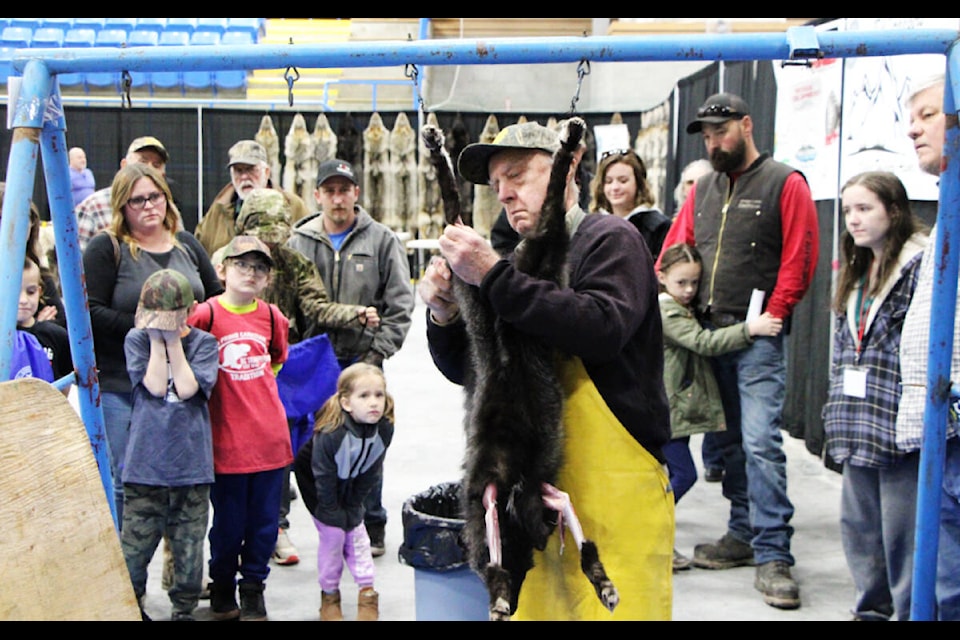It took George Noth just a half-hour to skin a fox.
He started with the feet - unlike the beaver which is skinned tip-to-tail - it’s best to go from the bottom on a fox to ensure you get the hide off in one piece, he said.
Using two razor-sharp knives, he demonstrated how to do it efficiently before a crowd of onlookers at a public open house at the BC Trappers’ Convention Saturday.
“What you need is a very sharp knife and I generally use a big one for the initial cuts and I use a little paring type knife for the bones and the skulls,” Noth 79, said. “This style is called case skinning. The only other animal we skin different is the beaver and that’s skinned open when you make a slit from the chin right down to the vent.
“There’s an old saying that if you can skin an otter and a beaver, you can skin anything.”
The fox was hung upside down, its back legs attached to a skinning gambrel. Noth said he was concerned at first when he noticed parts of it were still bloody, some fur had been removed and it had been shot twice, leaving two holes in the hide.
However, he started with the front legs close to the body before skinning the back legs to the top of the animal’s anus. Before going further he made a six-inch cut into the tail to expose the tail bone, removing it with a tail puller.
He then grabbed the hide, pulling it down and off the body, trying to keep it in one piece
“You pull it off the body of a fox. If you were doing a bigger animal, like a coyote, you’d have to cut most of that off.”
An animal’s face is always the hardest, he explained, because that’s where the skin is tightest. He took care around the fox’s face, snipping any sinew before removing the cartilage from the ears so it wouldn’t rot later.
He then pulled the rest of the hide off the body, laying it fur side down on a “fleshing beam.” Using a special fleshing knife, he scraped the remaining meat off the hide, soaking up the grease and blood with paper towels and sawdust.
Noth said he typically dries the furs for several days by hanging them in his cabin. It’s important to wash your hands afterward, he said, for health and safety reasons.
Noth, who does campground maintenance work in the summer, has spent 40 years as a trapper in the Burns Lake area. Over the years, he has trapped and skinned martens, minks, muskrats, foxes, coyotes, beavers, wolverines and wolves. It’s hard work and not a lot of money, but for him, it’s a passion project.
He said he has won several prizes at conventions for skinning and “I’ve pretty well made it my life.
“I’ve been a trapping instructor for the last 30 years and I’ve taught hundreds of students,” he said. “Every now and then I get one who calls me up and tells me they’ve had some real good success and that makes me feel wonderful.”
patrick.davies@100milefreepress.net
Like us on Facebook and follow us on Twitter.
